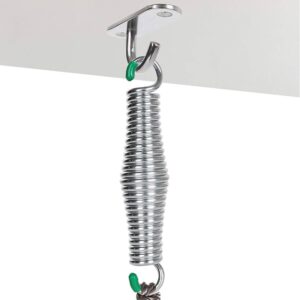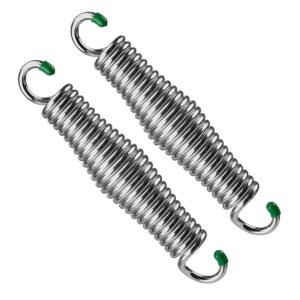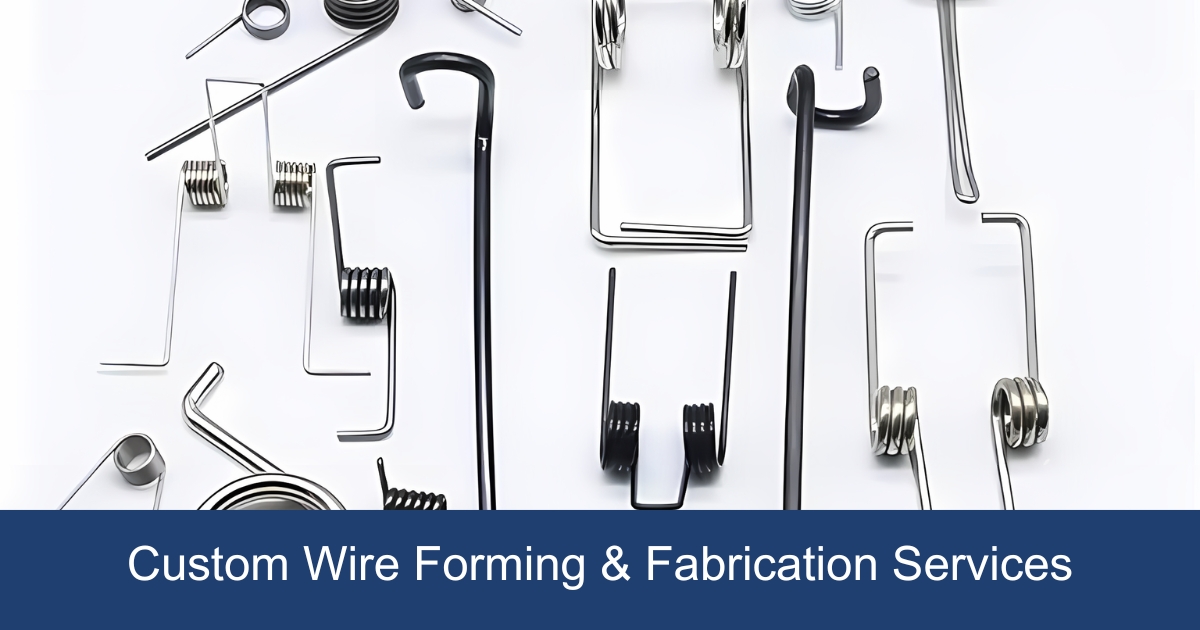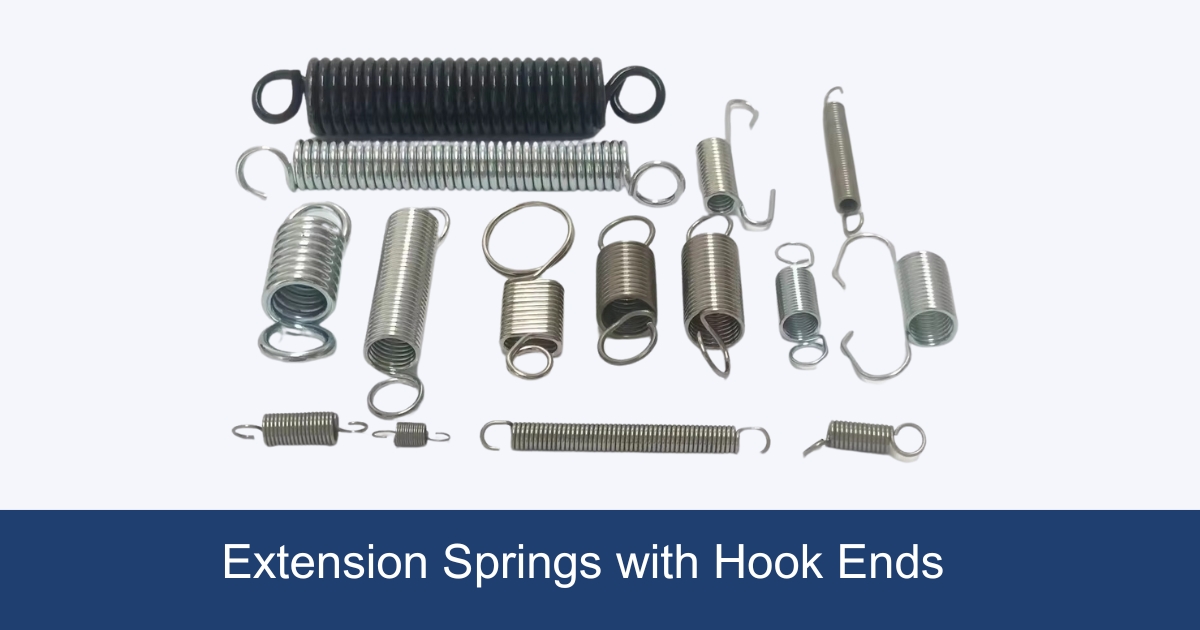Welcome to “Porch Swing Springs: Your Ultimate FAQ Guide,” where we delve into everything you need to know about this essential component of porch swing setups. Porch swing springs not only enhance the swinging experience by providing a smoother, more comfortable motion but also play a crucial role in the durability and safety of your porch swing. Whether you’re considering to customized springs to your existing swing or are curious about the benefits they offer, this guide is designed to answer all your questions, from how they work and the types available to installation tips and maintenance advice. Let’s embark on a comprehensive exploration of porch swing springs.
What is a porch swing spring?
A porch swing spring is a type of hardware accessory designed to enhance the comfort and functionality of a porch swing. These springs are typically installed between the overhead support (such as a ceiling, beam, or frame) and the porch swing itself. Their primary function is to provide a smoother, more gentle swinging motion, absorbing shocks and reducing the direct impact and stress on both the swing and the support structure.
What is a porch swing spring made of?
Porch swing springs are made from various materials, with carbon steel porch swing springs and stainless steel porch swing springs being the most common due to their durability and strength material renowned for its ability to withstand significant stress while returning to its original shape. This resilience makes spring steel ideal for the dynamic loads a porch swing endures. To enhance corrosion resistance and durability, these springs are often coated or treated, with methods such as galvanization or powder coating, to prevent rust and wear from exposure to the elements. In some cases, stainless steel porch swing springs may also be used for its superior rust resistance, especially in humid or coastal environments, offering a longer-lasting but potentially more expensive alternative. The choice of spring steel ensures that porch swing springs can offer both the strength to support substantial weight and the flexibility to provide a smooth, comfortable swing motion.
How do a Porch swing spring work?

Porch swing springs function by leveraging the elasticity and strength of spring steel to create a cushioned and flexible link between the swing and its overhead support. These springs either stretch or compress under the weight and motion of the swing, absorbing shocks and moderating the force between the swing and the support structure. This results in a smoother, more comfortable swinging experience, as it reduces the jerky movements often felt with swings directly attached to a support without springs. The ability of the springs to return to their original shape after being stretched or compressed ensures both enhanced comfort for users and protection for the swing and support structure from wear and tear, thus prolonging their lifespan and maintaining safety.
What are porch swing spring used for?

Porch swing springs are used to enhance the comfort and functionality of porch swings by providing a smoother, more flexible swinging motion. They absorb shocks and reduce the impact of swinging, which not only makes the swing more comfortable to use but also reduces wear and tear on both the swing itself and the structure from which it hangs. By moderating the forces exerted during use, these springs ensure a gentler, more enjoyable experience for the user and contribute to the longevity and safety of the porch swing setup.
Let’s delve into the detailed process under “IV. Installation Insights,” providing a comprehensive guide to ensuring your porch swing, enhanced with springs, is installed securely and safely.
Installation of porch swing spring
A. Preparing for Installation: Tools and Location Selection
Before starting the installation, ensure you have all the necessary tools and materials. Commonly required tools include a drill, stud finder, measuring tape, level, wrench, and possibly a ladder. Materials might include the porch swing, springs, hangers, and any specific mounting hardware recommended by the porch swing spring manufacturer.
Selecting the right location is crucial for both aesthetics and safety. Consider factors like the view, sun exposure, and clearance from walls or railings. Ensure the chosen spot can support the swing’s weight, including occupants.
B. Step-by-Step Installation Guide
- Finding the Ideal Location:
- Measure the space to ensure there’s enough room for the swing to move freely without hitting surroundings.
- Consider the swing’s exposure to elements like sunlight and rain, aiming for a spot that maximizes comfort and durability.
- Choosing the Right Porch Swing:
- Select a swing that matches your aesthetic preferences and fits the space available.
- Ensure the swing’s materials are suitable for outdoor use and can withstand your local weather conditions.
- Securing a Strong Mounting Point:
- Use a stud finder to locate ceiling joists or a sturdy beam in your porch’s roof structure.
- Ensure the mounting points are capable of supporting the combined weight of the swing, its occupants, and the dynamic forces involved in swinging.
- Installing Porch Swing Hangers:
- Once you’ve identified the mounting points, install the swing hangers according to the manufacturer’s instructions.
- Ensure the hangers are aligned and leveled across from each other to avoid uneven load distribution.
- Attaching the Springs:
- Attach the springs to the swing hangers. If your swing and springs have different attachment mechanisms, you may need additional hardware like S-hooks or quick links.
- Ensure the springs are correctly oriented and securely attached.
- Hanging the Porch Swing Properly:
- Connect the swing to the springs, adjusting the chain or rope length as necessary to achieve the desired height and level.
- The swing should be high enough off the ground to allow easy sitting and standing, typically 17 to 19 inches from the floor to the seat.
C. Ensuring Safety and Leveling
- Once the swing is installed, conduct a thorough safety check. Verify all hardware is tightened, and there are no sharp edges or points where fingers could be pinched.
- Test the swing gently to ensure it moves freely and doesn’t contact any part of the porch structure.
- Use a level to check that the seat is perfectly horizontal. Adjust the chain or rope length if necessary to level the swing.
- Regularly inspect the swing, springs, and hardware for signs of wear or damage, replacing any compromised parts immediately.
Following these detailed steps will help ensure your porch swing is a safe, comfortable, and enjoyable addition to your outdoor living space.
Selection Guide for Porch Swing Springs
Choosing the right springs for your porch swing not only enhances comfort but also ensures safety and durability. Here’s a guide to help you make an informed decision:
A. Understanding Different Types of Springs
Springs play a crucial role in the performance and comfort of porch swings by providing a smooth, gliding motion. There are mainly two types used with porch swings:
- Extension Springs: These springs stretch under load, providing a cushioning effect when the swing is in use. They’re ideal for swings installed in locations with ample vertical space.
- Compression Springs: Less common for porch swings, compression springs compress under load. They’re typically used in applications where there is limited space for the spring to extend.
Each type of spring offers a different swinging experience, and the choice depends on the specific setup and preference for swing motion.
B. Material Considerations: Steel vs. Stainless Steel
The material of the spring affects its durability, especially in outdoor conditions:
- Steel porch swing springs : Known for their strength and robustness, steel springs are a common choice for porch swings. However, they are prone to rust if not properly coated or maintained, especially in humid or coastal environments.
- Stainless Steel porch swing Springs: Offer superior resistance to rust and corrosion compared to standard steel, making them an excellent choice for outdoor use. Stainless steel porch swing springs are more expensive but provide greater longevity and require less maintenance.
When selecting the material for your porch swing springs, consider the climate and exposure to elements to ensure a lasting installation.
C. Sizing and Load Capacity: Matching Springs to Your Swing
Selecting the right size and load capacity for your springs is crucial for safety and optimal performance:
- Weight Capacity: Ensure the heavy duty porch swing springs can support the combined weight of the swing and its occupants. Springs are rated by their load capacity, and it’s advisable to choose springs that exceed the maximum expected weight to ensure safety and durability.
- Size and Length: The size and length of the springs should be compatible with the installation space and the swing’s design. Longer springs provide a softer, more extended glide, while shorter springs offer a firmer, more controlled motion.
- Compatibility with Swing and Hardware: Confirm that the heavy duty porch swing springs are compatible with the porch swing’s mounting hardware. The spring’s ends must fit securely with the swing hangers and the swing itself.
By carefully considering these factors, you can select the appropriate springs for your porch swing, ensuring a comfortable and safe swinging experience that lasts for years.
Common Issues with Porch Swing Springs
Porch swing springs enhance the comfort and functionality of porch swings by providing a smoother and more flexible movement. However, like any outdoor hardware, they can encounter various issues over time. Here are some common problems associated with porch swing springs and tips on how to address them:
1. Rust and Corrosion
- Cause: Exposure to moisture and outdoor elements can lead to rust and corrosion, especially in non-stainless steel porch swing springs.
- Solution: Regularly inspect springs for signs of rust. Use rust-resistant coatings or replace stainless steel porch swing springs options for better durability. Keep springs clean and dry, and consider applying a silicone lubricant to protect against moisture.
2. Wear and Tear
- Cause: Continuous use and exposure to the elements can cause springs to wear out, lose tension, or stretch.
- Solution: Conduct routine inspections to check for any signs of wear or damage. Replace springs that show significant wear to maintain safety and comfort.
3. Squeaking Noises
- Cause: Friction between the spring coils or at the connection points can produce squeaking noises.
- Solution: Apply a silicone-based lubricant to the springs and their attachment points. If the problem persists, check for signs of rust or wear, which may necessitate replacing the springs.
4. Loss of Tension
- Cause: Over time, springs can lose their tension, leading to a less comfortable swing motion.
- Solution: If the springs no longer provide the desired level of comfort or support, it’s time to replace them. Choosing heavy duty porch swing springs with a slightly higher weight capacity can also help them retain tension longer.
5. Improper Installation
- Cause: Incorrect installation can lead to uneven tension, increased wear, or even safety hazards.
*Solution: Ensure springs are correctly installed according to the manufacturer’s instructions. The swing should be level, and springs should be under even tension to prevent premature wear.
6. Compatibility Issues
- Cause: Not all springs are suitable for every porch swing model or design, leading to potential issues with fit or performance.
- Solution: Verify the compatibility of the springs with your porch swing, considering factors like weight capacity and spring type. Consult with manufacturers or experts if unsure.
7. Environmental Damage
- Cause: Springs exposed to harsh weather conditions, such as extreme temperatures, saltwater, or high humidity, can experience accelerated degradation.
- Solution: Use springs made from materials suitable for your environment. Stainless steel porch swing springs or coated springs offer better resistance to environmental damage. Regular maintenance and protective measures can also extend their lifespan.
Addressing these common issues promptly can help ensure your porch swing remains a safe and enjoyable addition to your outdoor space. Regular maintenance, proper installation, and choosing the right materials are key to maximizing the lifespan and performance of your porch swing springs.
Maintenance and Care of Porch Swing Springs
Regular maintenance and care of your porch swing springs are vital for ensuring their longevity and the safety of the swing. Here’s a guide to help you keep your springs in top condition:
A. Routine Checks for Wear and Adjustments
- Inspection Frequency: Perform a detailed inspection of the springs and their connections at least twice a year. Increase the frequency if the swing is used heavily or if it’s exposed to harsh weather conditions.
- Wear and Tear: Look for signs of wear, such as stretching, bending, rust, or any damage to the spring itself. Check the connections and ensure the hardware is tight and in good condition.
- Adjustments: If your swing feels less comfortable or the motion has changed, it might be time to adjust the tension of the springs or replace them. Adjustments should be made carefully to maintain balance and proper swing motion.
B. Preventing and Addressing Corrosion
- Protective Coatings: Apply a protective coating to the springs, especially if they are not made of stainless steel. Regularly check the coating for chips or cracks and reapply as necessary.
- Environmental Considerations: If you live in a coastal area or a place with high humidity, consider using stainless steel springs or ensuring that steel springs are galvanized or coated to resist corrosion.
- Cleaning: Clean the springs with a mild soap solution and water to remove dirt and grime, which can trap moisture and contribute to rust. Ensure they are dry before applying any protective coatings.
C. Solutions for Squeaking Springs
- Lubrication: Squeaking is often a sign of friction in the springs or at the connection points. Apply a silicone-based lubricant or WD-40 to the springs and their attachments to reduce noise. Avoid oil-based lubricants that can attract dirt and debris.
- Regular Lubrication Schedule: Incorporate lubrication into your routine maintenance schedule to prevent squeaking from developing.
- Replacement: If lubrication does not stop the squeaking or if the springs show signs of significant wear, it might be time to replace them. Using worn-out springs can affect the swing’s safety and comfort.
By following these maintenance and care tips, you can extend the lifespan of your porch swing springs, ensuring they provide a smooth and safe swinging experience for years to come.
Concluding our journey through the intricacies of Porch Swing Springs, we’ve underscored their critical role in ensuring your outdoor leisure’s safety and comfort. For those seeking to elevate their porch swing experience, consulting with a custom Porch Swing Springs manufacturer like Zigoal Springs can offer bespoke solutions tailored to your needs. Don’t hesitate to enhance your swing with expertly crafted springs designed for durability and performance. Take the next step towards a seamless outdoor relaxation experience today.




